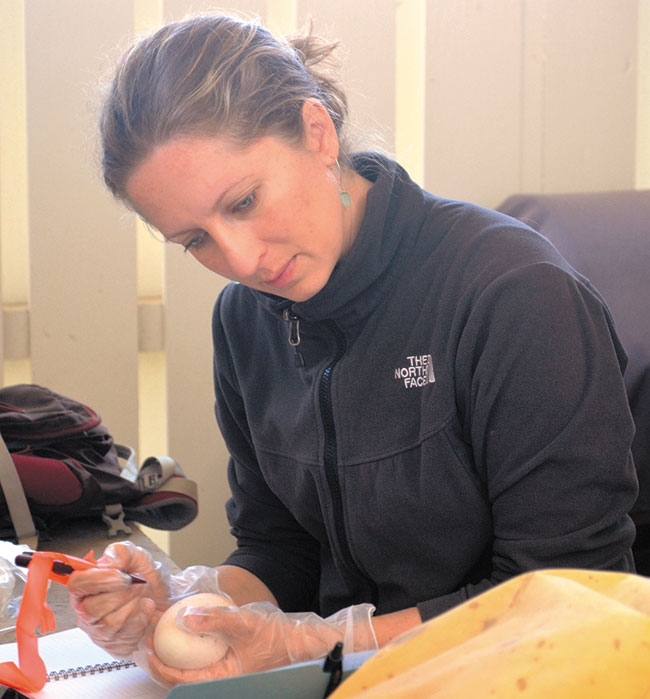Navy Cultivates Albatross Nesting Area At Kahuku Wildlife Refuge

Pacific Rim Conservation biologist Lindsay Young determines an egg’s viability for relocation. Photo by Stefan Alford.
Kauai residents were relocated to the North Shore of Oahu Dec. 17, with the help of the U.S. Navy.
In a partnership with U.S. Fish and Wildlife Service and Pacific Rim Conservation, the Navy transported Laysan albatross eggs from Pacific Missile Range Facility (PMRF) to James Campbell National Wildlife Refuge in Kahuku.
The seabirds at PMRF nest near an active runway, where they pose a collision hazard to aircraft. The large birds, with wingspans of up to 7 feet, have a habit of circling over the nesting area. Each year, the Navy relocates all albatross eggs and adults from PMRF’s air safety zone.
“The Navy’s albatross egg relocation program has been a resounding success since we started at PMRF in 2004,” said Stefan Alford, PMRF public affairs officer. “However, with Kauai’s limited space for secure albatross sanctuaries, we’ve had to look at off-island options this year.”
The albatross eggs will be placed in an incubator for two months until they hatch, and then the chicks will be raised by hand for five months on a diet of squid, fish and vitamins.
“Albatrosses return to the same location where they were raised as chicks. Thus, by moving the eggs prior to hatching, the chicks will imprint on James Campbell Refuge and return there to breed, becoming the seeds of a new colony that they will establish in the future, away from aircraft and people,” explained Eric VanderWerf of Pacific Rim Conservation.
The young birds will spend their first few years at sea, and are expected to begin returning to the refuge in three to five years, and to start nesting on the refuge within five to eight years.
More than 99 percent of Laysan albatrosses nest in the low-lying Northwestern Hawaiian Islands at Midway Atoll and at Hawaiian Islands National Wildlife Refuge, where they are threatened by rising sea levels associated with global climate change.
“Recent storm surges have wiped out thousands of albatross nests with eggs or young chicks,” noted acting refuge manager Jared Underwood of U.S. Fish and Wildlife Service. “This was one of the main reasons that made James Campbell National Wildlife Refuge an attractive location to receive the eggs, because the refuge is located on a ‘high’ island within the historical nesting range of the Laysan albatross.”





